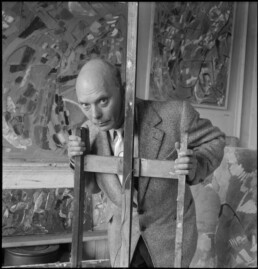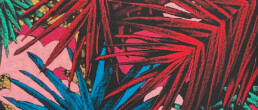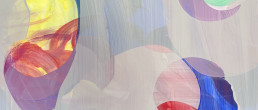André Lanskoy
1902 (Moscow) - 1976 (Paris)
No work available for the moment.
Biography
André Lanskoy was born Andrei Michailovitch Lanskoy, son of Comte Lanskoy, in Moscow. At the outbreak of the Revolution he joined the Czarist forces. Afterwards he lived in Kiev, where he began to paint under the guidance of Soudeikine, a fashionable painter– decorator.
In Paris in 1921, he attended the Académie de la Grande Chaumière, where he discovered the work of Van Gogh and Matisse, and associated with Soutine, whose influence may be seen in Lanskoy’s expressionist paintings of figures and still-lives of this period.
After exhibiting in a group show in 1923, he was discovered by Wilhelm Uhde, who organized his first solo show in 1925. He showed landscapes and interiors, but subject matter was secondary to the surface quality of the paint and the luminous colour harmonies, which tended towards a dominant monochrome. Lanskoy exhibited at that time together with other Russian artists in Paris : Robert and Sonia Delaunay, Leopold Survage, Ossip Zadkine, etc. Soon after, museums and important private collections acquired his works.
In 1938 an exhibition of his work toured the Netherlands. By 1939 his gouaches already showed colour liberated from its imitative capacity and used for its purely expressive qualities. It was not until the final years of the war that the rest of his work became concerned with abstract forms. He always refused to attribute great importance to this journey towards abstraction, affirming the identity of nature between figurative and abstract painting. Works made between 1944 and 1948 were exhibited in Paris in 1948, and followed by exhibitions in Brussels, London, Lausanne, Zurich, New York Berlin and elsewhere. They made his painting – teeming as a virgin forest, brilliant as a Russian ballet, inventive as a popular fete, prodigal as a prosperous grandee – whose casual quality pleased the somber mood of De Staël – known across the world. His colored enchantments were easily transformed from the impasto of the knife into tapestries of an oriental sumptuousness.
He took part in innumerable group exhibitions, including, in Paris, the ‘Salons de Mai’ and the ‘Realités Nouvelles’. He is regarded as one of the most important protagonists of lyric abstraction of the ‘Ecole de Paris’ (Paris School) and was honored with several exhibitions, e.g. together with other artists at the Documenta II in 1958 or at the overview showing ‘Les Peintres Russes de l’école de Paris’ at the museum of Saint Denis in 1960.






